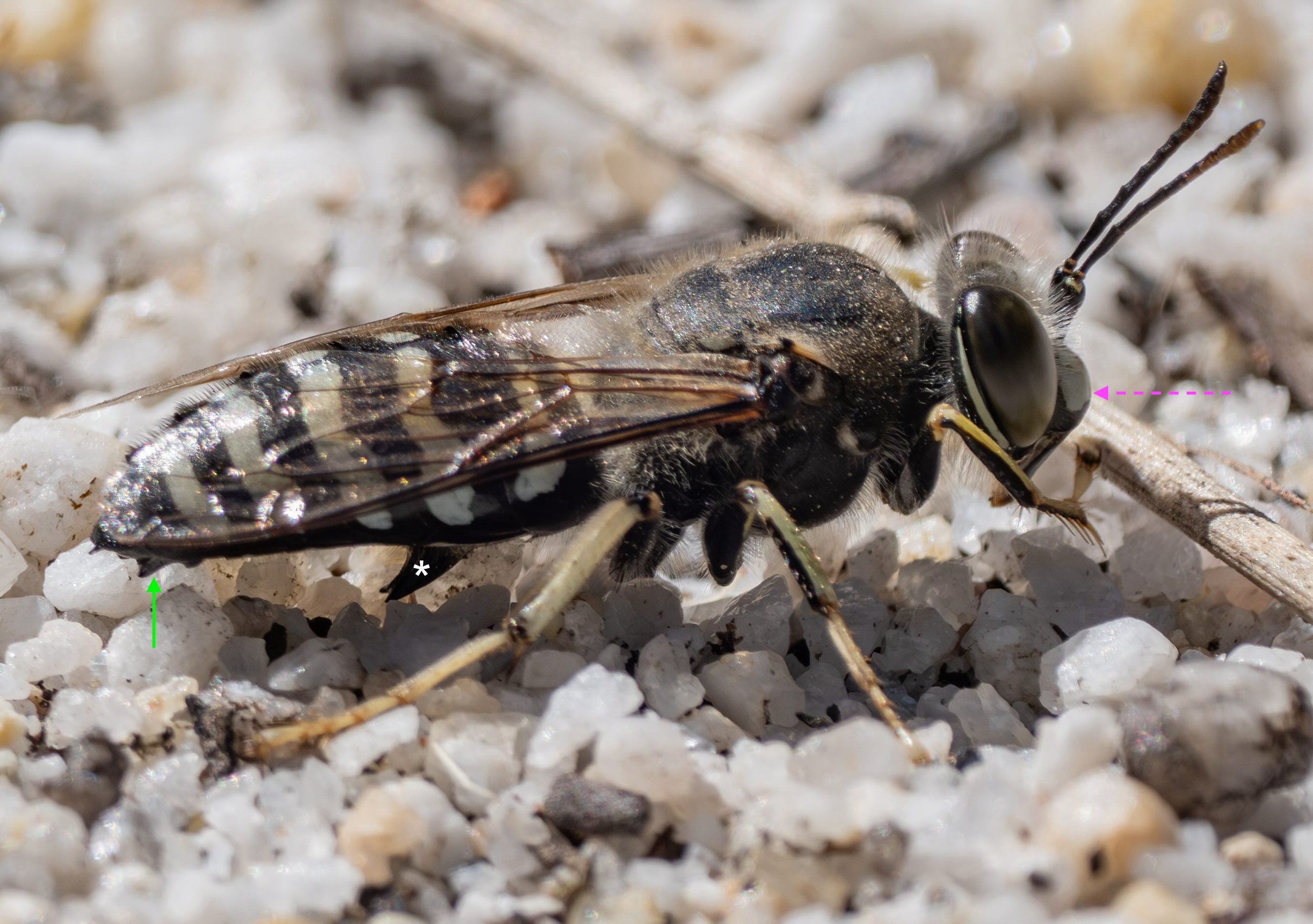
sternal processes of male
Males in some species have distinctive midline processes on the second sternite (S2) (star) and often also on the sixth (S6) (solid arrow). In Bembix furcata, these processes are quite diagnostic. Although this would seem to makes species ID trivial for male B. furcata, there are two complications. First, these processes can be greatly reduced in some individuals, and S2 not apparently bifid, particularly in small males. Second, to see these processes (or the sternites at all), requires a nearly lateral or (ideally) ventral view. Most photos are taken from above.
The lateral view of the clypeus in this male matches the description for Bembix furcata: strongly protruberant, evenly arched in profile (dotted arrow).
Bembix furcata
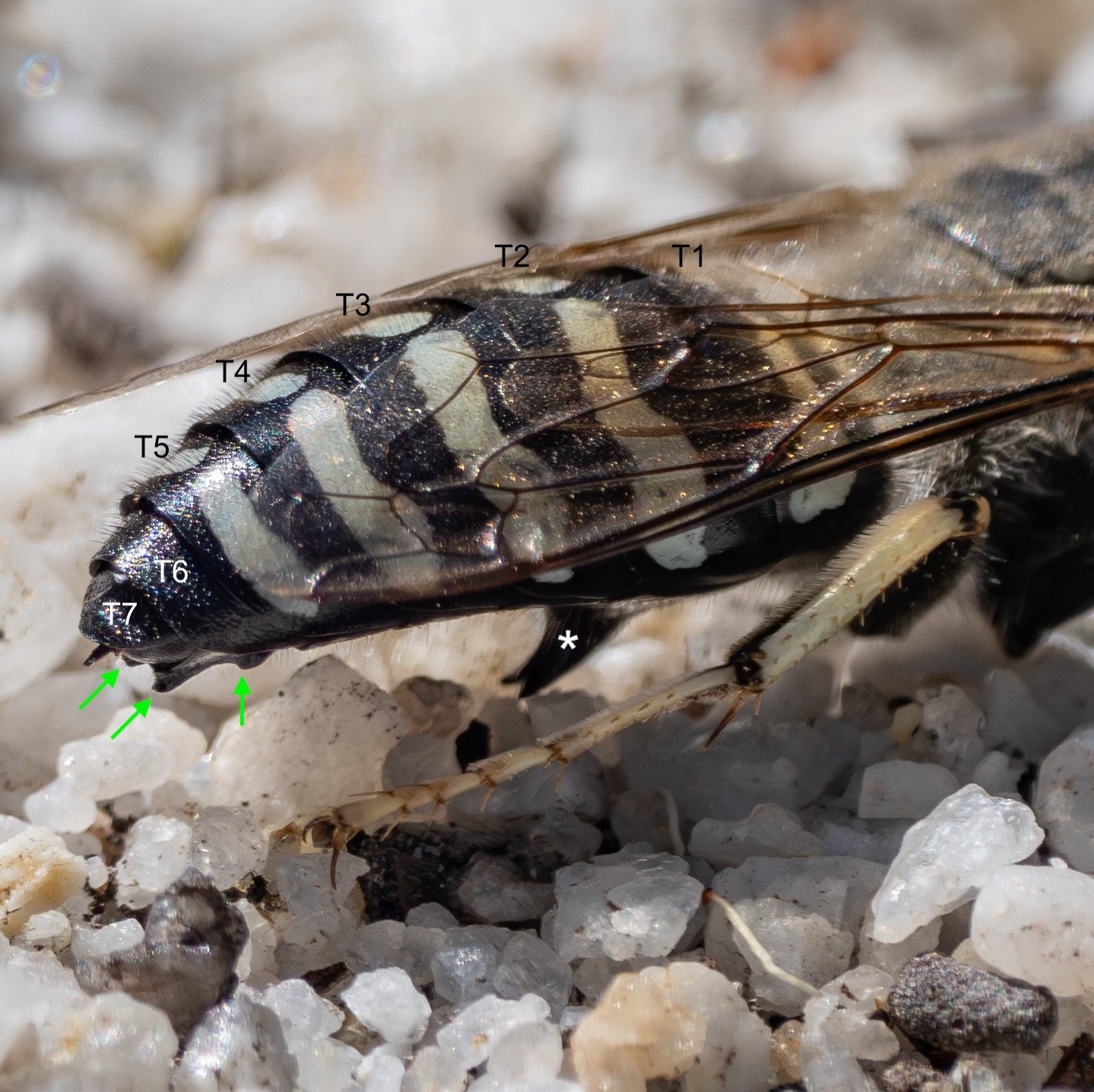
metasomal tergites
In Bembix furcata males, S2 is strongly projecting (star) and often apically cleft to form two points (‘bifid’); S6 has a broad and complex projection (arrows), including a pair of angles at the outer sides and a short, blunt apicomedial point.
Male and female Bembix are best distinguished on the basis of the number of metasomal segments visible dorsally. That is, a count of the tergites. Males have 7, females just 6. Antennae also differ in the number of flagellar segments (males with 11, females with 10). However, apical segments are often short and may be difficult to count accurately in many field photos.
Bembix furcata
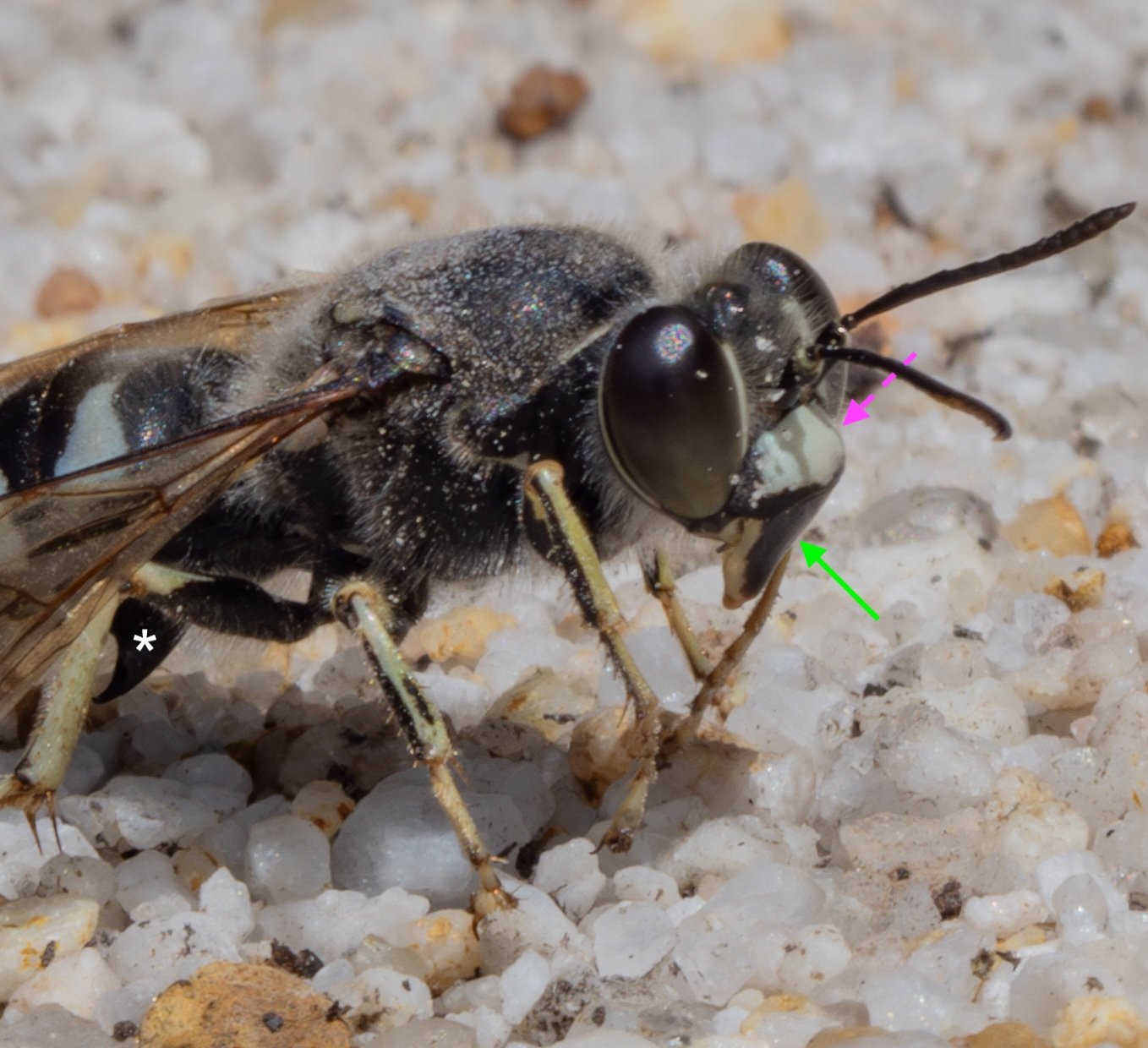
clypeus, labrum, S2 process
In this male the clypeus (dotted pink arrow) is protruding and largely white, although black laterally and apically; the labrum (solid green arrow) largely black, but white-cream laterally. The mandible is pale in colour, the base just visible tucked in behind the labrum.
Note also the large, arched process on S2 (star).
Bembix furcata
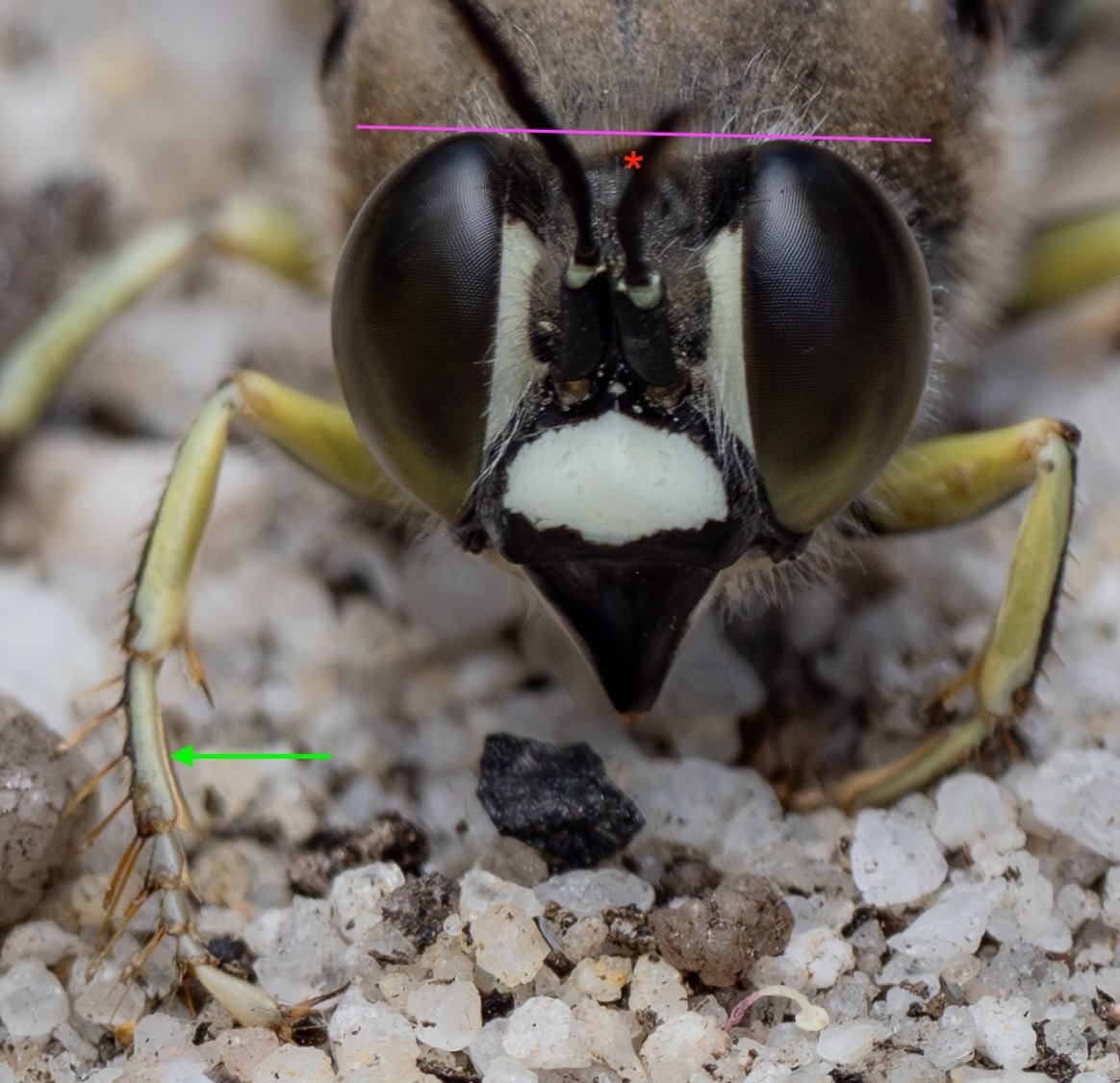
vertex, front basitarsus
In this species the vertex (star) is well below the level of the eye tops (line). The front basitarsus (arrow) is slender, narrowly margined black along the outer edge, and bears 6 slender, pale amber pecten spines. Note too that the following three tarsal segments are quite slender (not expanded or modified).
Bembix furcata

male antennae
In this species, flagellomere 5 (F5) is slightly excavated beneath, F6 more strongly so, and F7 spinose beneath (arrow). Compare to Fig. 134 (Evans & Matthews, 1973).
Bembix furcata
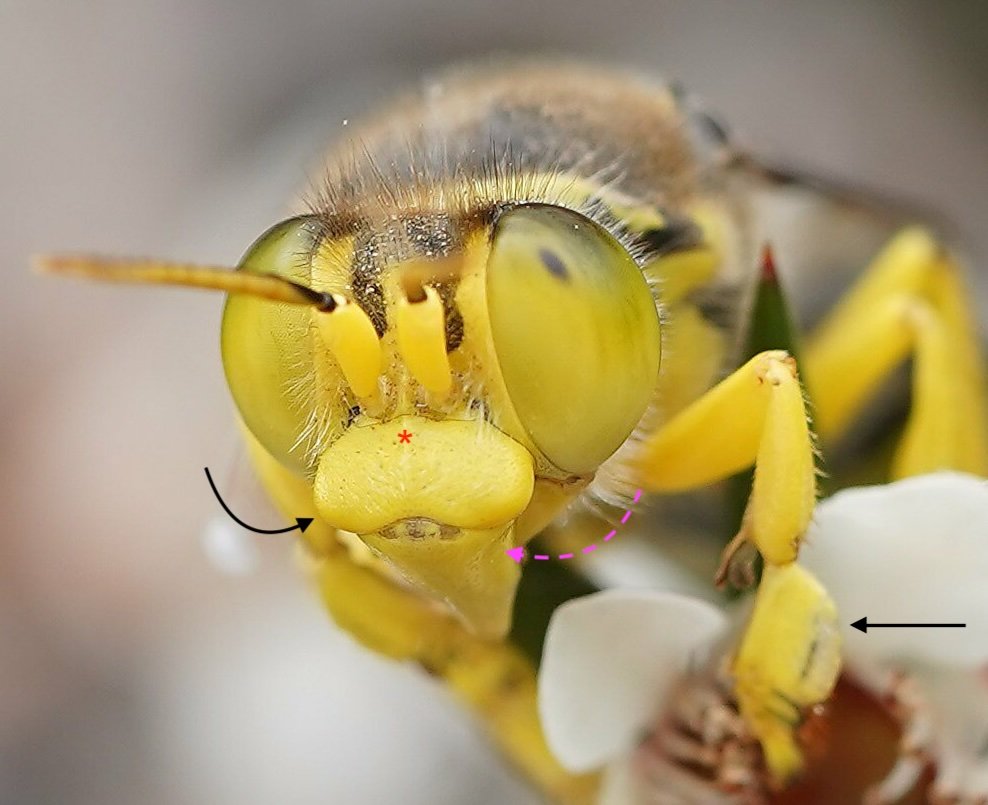
clypeus, labrum, front basitarsus
The features shown in this image are diagnostic for Bembix palmata males. The bright yellow clypeus is concave apically, has prominent round lobes laterally (curved solid arrow), and has a small median, basal ridge (star). The labrum is depressed near the base (dotted arrow), and also bright yellow. And the shape of the extremely broad front basitarsus (straight arrow) is unique.
Bembix palmata
Image courtesy Reiner Richter
https://inaturalist.ala.org.au/observations/147447501
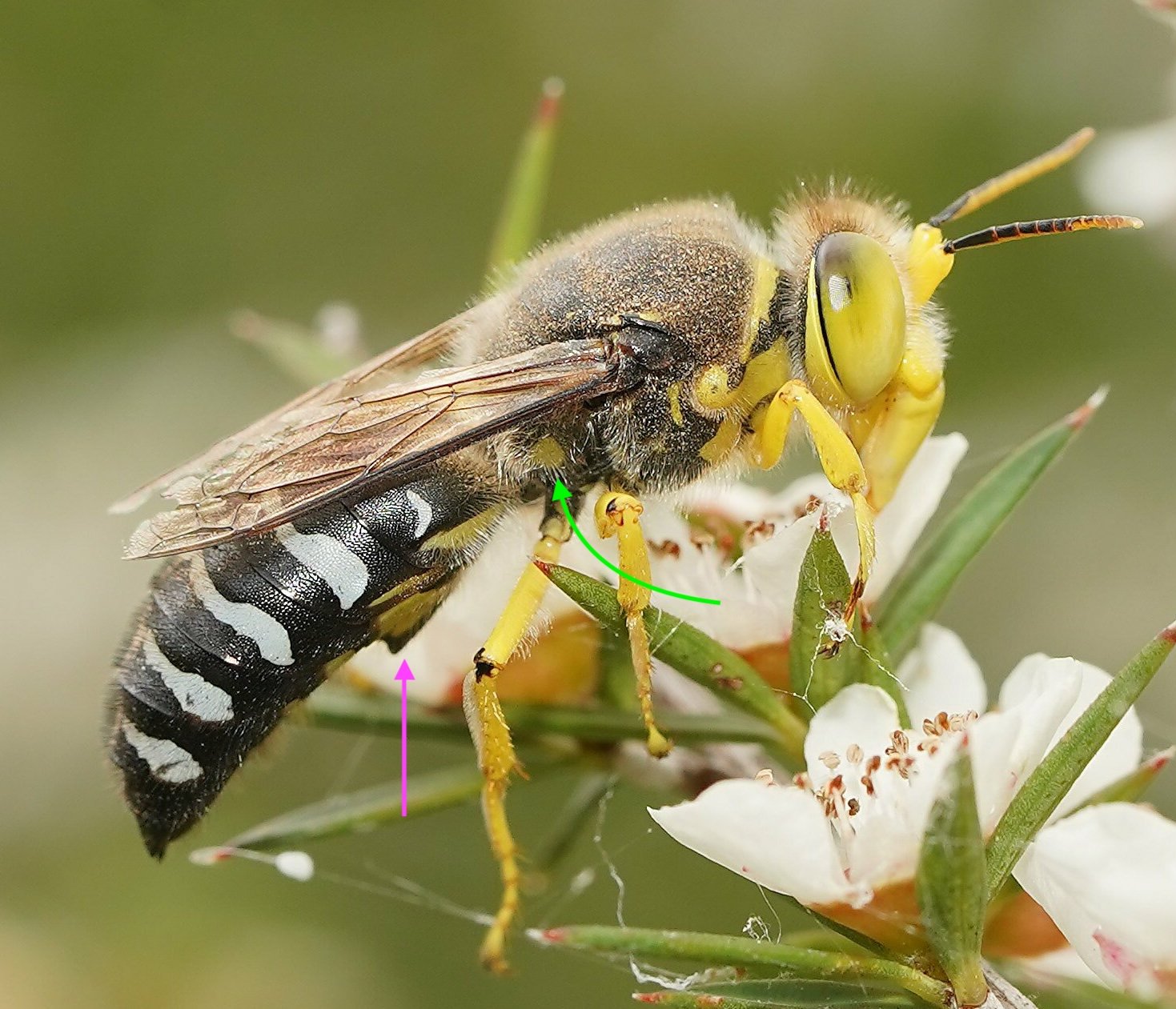
S2 process, propodeum markings
The best chance to see the sternal process of males is when they are feeding at flowers. This species has a high ridge on S2, right-angled at the apex (straight arrow).
The yellow marks on the sides of the propodeum (curved arrow) are also visible from this angle. Note too the yellow marks on the extreme lateral sides of T1, highlighting the extent to which the dorsal tergites wrap around ventrally.
Bembix palmata
Image courtesy Reiner Richter
https://inaturalist.ala.org.au/observations/147447501
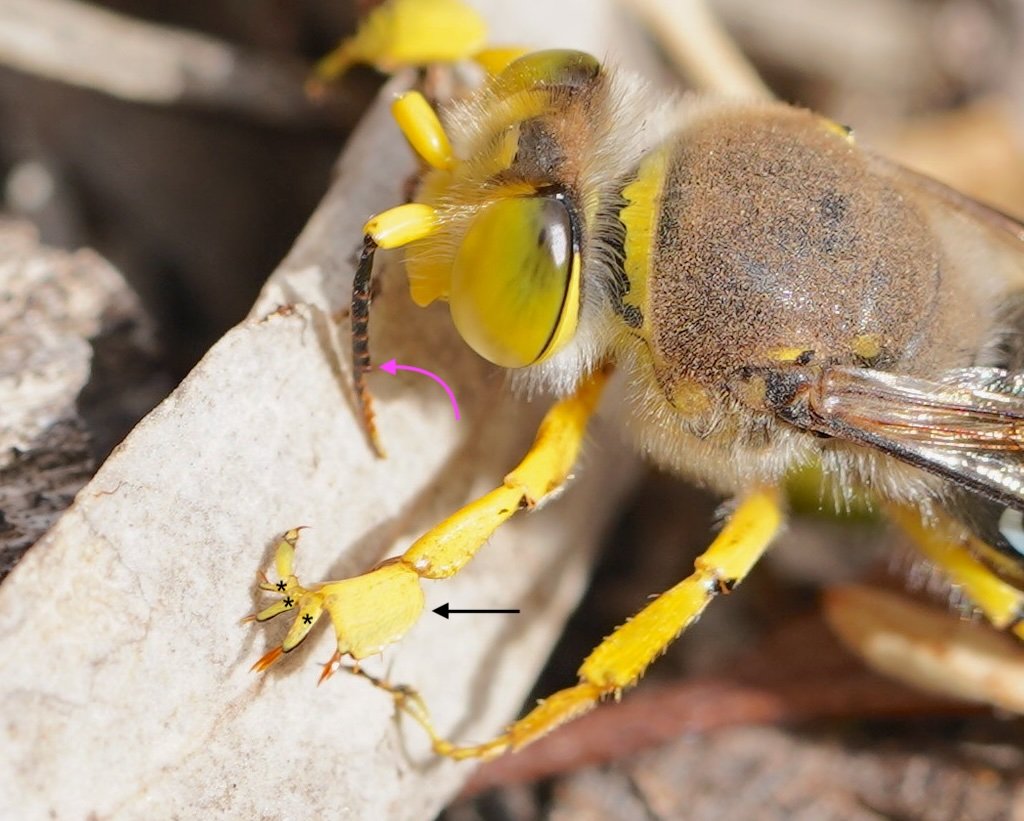
front basitarsus, male antenna
The uniquely shaped front basitarsus (straight arrow) of Bembix palmata is worth showing again. Note too the broadly expanded lobes of front tarsomeres 2, 3 and 4 (stars).
The shape of the male antenna is another feature that can helpful in species recognition. Modifications tend to start at flagellomere 5 (curved arrow), and in this species it is strongly spinose. Compare to Fig. 121 (Evans & Matthews, 1973).
Bembix palmata
Image courtesy Reiner Richter
https://inaturalist.ala.org.au/observations/105595939

pecten spines, clypeus, labrum, male antenna
The large number of pecten spines immediately identifies this as one of just three species (the Pectinipes species group). The highly distinctive shapes of the clypeus and labrum shape are diagnostic, and the strongly curved antennae provide further support.
Bembix flavifrons
Photographer: Mark Norman (Museums Victoria)
https://collections.museumsvictoria.com.au/specimens/2482511
Accessed 21 December 2025
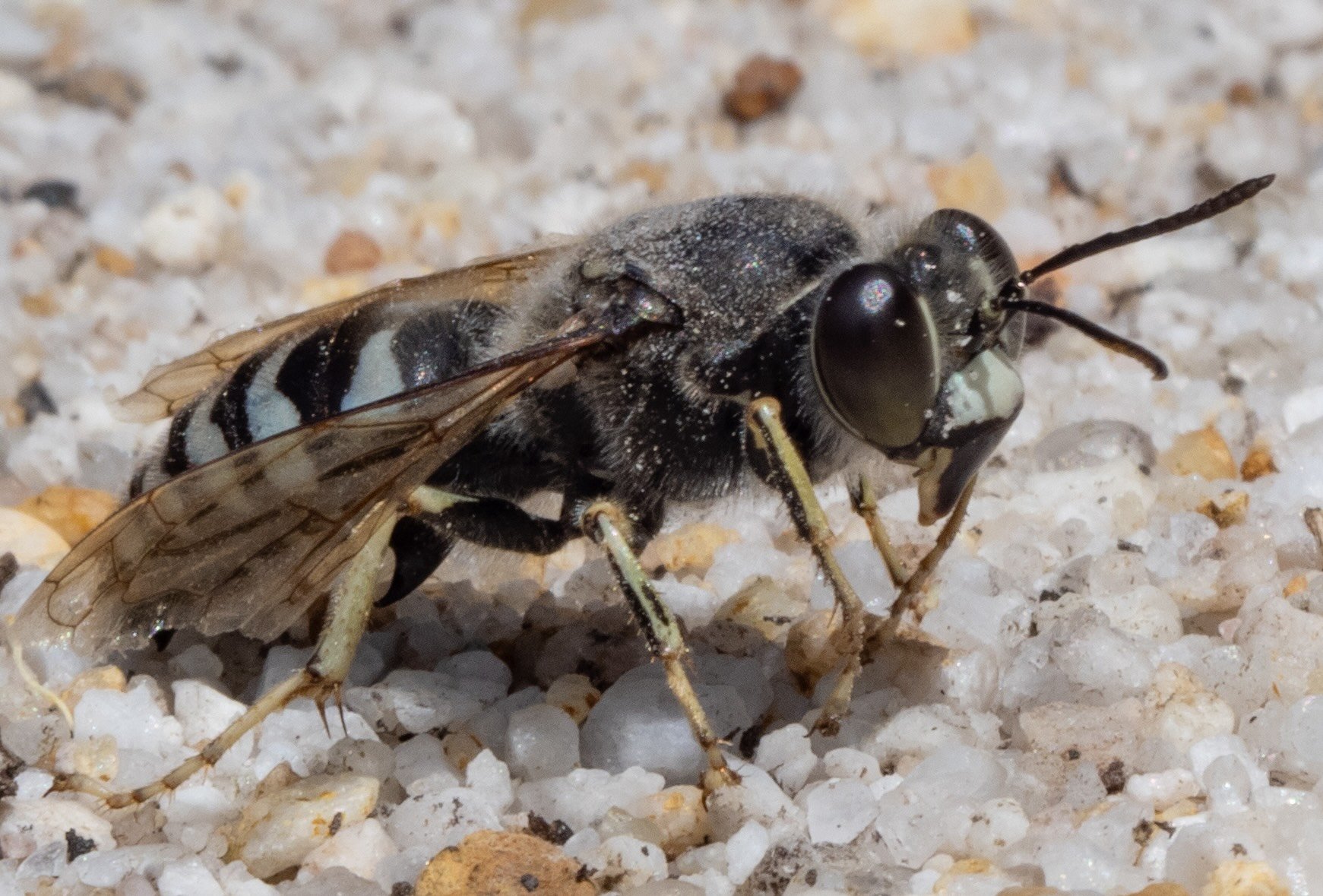
B. furcata
NOTE: this is the only species known from Tasmania
- clypeus white, bordered black; labrum black
- centre of vertex well below level of eye tops

B. lamellata
- tricoloured mandible
- large (broad?) S2 projection
- S6 elevated, angulate apically
- unusually dense & long pale hairs, including on T1 & propodeum
- metasoma mainly black, limited white markings
https://inaturalist.ala.org.au/observations/145146372
(image courtesy Brian Byrnes)

B. palmata
- front basitarsus much expanded from base; broad & flat: following tarsomeres also expanded on the outer margin
- clypeus prominent laterally, forming round & projecting lobes
- bright yellow legs, clypeus, labrum
https://inaturalist.ala.org.au/observations/256325551
(image courtesy Graham & Maree Goods)

B. flavifrons
- numerous pecten spines on front basitarsus (at least 16)
- expanded front basitarsus
- clypeus shape diagnostic, with pair deep lateral grooves and strongly elevated medially and laterally
- labrum also unusual form, with median basal sulcus and strongly elevated laterally
- mid tibia much expanded from a slender base
Photographer: Mark Norman (Museums Victoria)
https://collections.museumsvictoria.com.au/specimens/2482511
Accessed 21 December 2025













